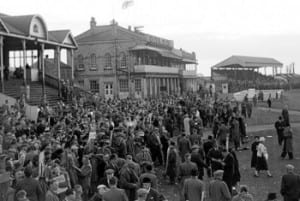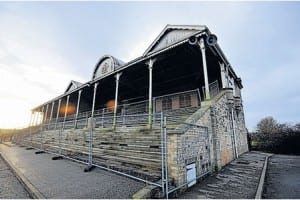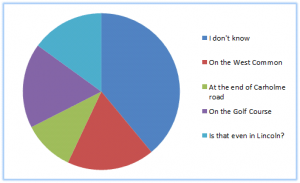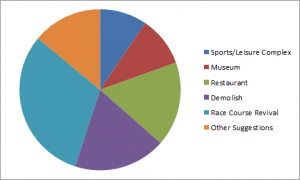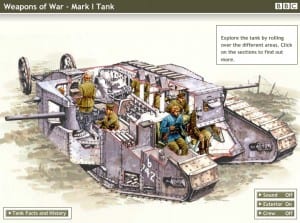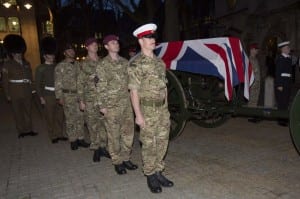As part of our restoration site-specific project we have recently finished collecting information and now have the oportunitity to anaylise what we’ve found. After spending a few weeks in Lincoln town centre asking people to answer a quick questionnaire we collated all the data we took. We showed 200 people two photgraphs, one of the Grandstand, Tattershall and Silver Ring stands in the early 20th century whilst a race event was happening, and one of the remaining stand today. Inspiration for this was drawn from a project carried out by John Newling called Make a Piano in Spain. In this project Newling asked 500 people “What do you do to make yourself feel better?”, he then sought out to transform these responses, gathering qualitative data. This is similar to what we have done below, although we asked 200 people rather than 500. The title of the project Make a Piano in Spain, was actually someone’s response to the question he asked, likewise we had a response to our question, “Is that even in Lincoln?” which has inspired the title of this blog post.
We then asked the question, Do you know where this is?
These five answers were the responses we found. As you can see over half of the people asked could not place this stand in Lincoln as we recieved the “I don’t know” answer from 78 people and “Is that even in Lincoln?” from 30. This in itself is quite alerting information, as you have read from previous blog posts on this site, the Grandstand’s history holds great significance in Lincoln’s past. This then may fuel the interest in our group project as we all immerse ourselves in the history of both the city and the Grandstand. Using this information we can identify that the majority of our audience may know nothing about the grandstand or it’s past. This allows our projects to contain an educational and informative element when we present them to the audience. Another response that gives prominence to this argument would be that 35 people thought the grandstand is “On the golf course”. Thinking the building to be part of the golf course would imply that it holds little significance other than to upgrade the aesthetic of the course to it’s users. The Project as a whole can draw confidence from this information, the grandstand at present holds little demand from the city of Lincoln, so drawing on its past importance and getting the public to contribute to the idea pool for it’s future, may help the building see heights of activity that it was used to 60 years ago.
Next we informed those who had agreed to answer our questions on the high street what it was we had planned, explaining:
“The Grandstand held three day racing meets three times a year for almost 160 years. During World War I the stands, and the surrounding common, were used as an airbase for the Royal Air Force. As you can see in the two photos, the grandstand pavilions were demolished down to one stand in the 1960’s because the Lincolnshire handicap moved to Doncaster. We are creating a project which regenerates these other two stands, hoping that by engaging an audience in the busy past of the buildings, we can change the dormant nature of the stand now into a place people often visit once again”.
After a short explanation of what our site specific performance entailed, we asked our volunteers a second question: What do you think the Grandstand should be used for now?
The biggest response here involved, in some way or form, returning horse racing events to the Lincoln west common, rather than at the showground where some races are carried out currently. This was suggested by 62 people, many of whom mentioned that it may bring a great deal of income into the city and boost the local economy. On the 24th March 1903 a record number of 7700 tickets were sold each day during the race meeting, ticket buyers coming from all over the country, tourists that no doubt contributed greatly to Lincoln’s economy that particular weekend. Sadly the second most frequent response was a call to have the stand demolished, with 37 people suggesting that there was no point having a building lying around doing nothing for the city. Although their want to cut out inefficiency is justified, again the question of lack of knowledge around the grandstand arises. I think back to how extensive my research was to find out the basic happenings of the building. Compare this difficulty to the ease of learning anything about the Lincoln Cathedral or Castle, two buildings that you would struggle to find anyone in favor of demolishing. This leads nicely to another favored suggestion, turning the stand into a museum in itself. Making the information of the grandstand’s impressive history easily accessible would aid the local population to agreeing with our project’s intentions. Again the five most reoccurring suggestions have been represented, the “Other Suggestions” segment contained ideas such as: An outdoor cinema, swimming pool, mosque, football pitch, marketplace, shopping mall, park and ride station, zoo, war memorial and a nightclub.
